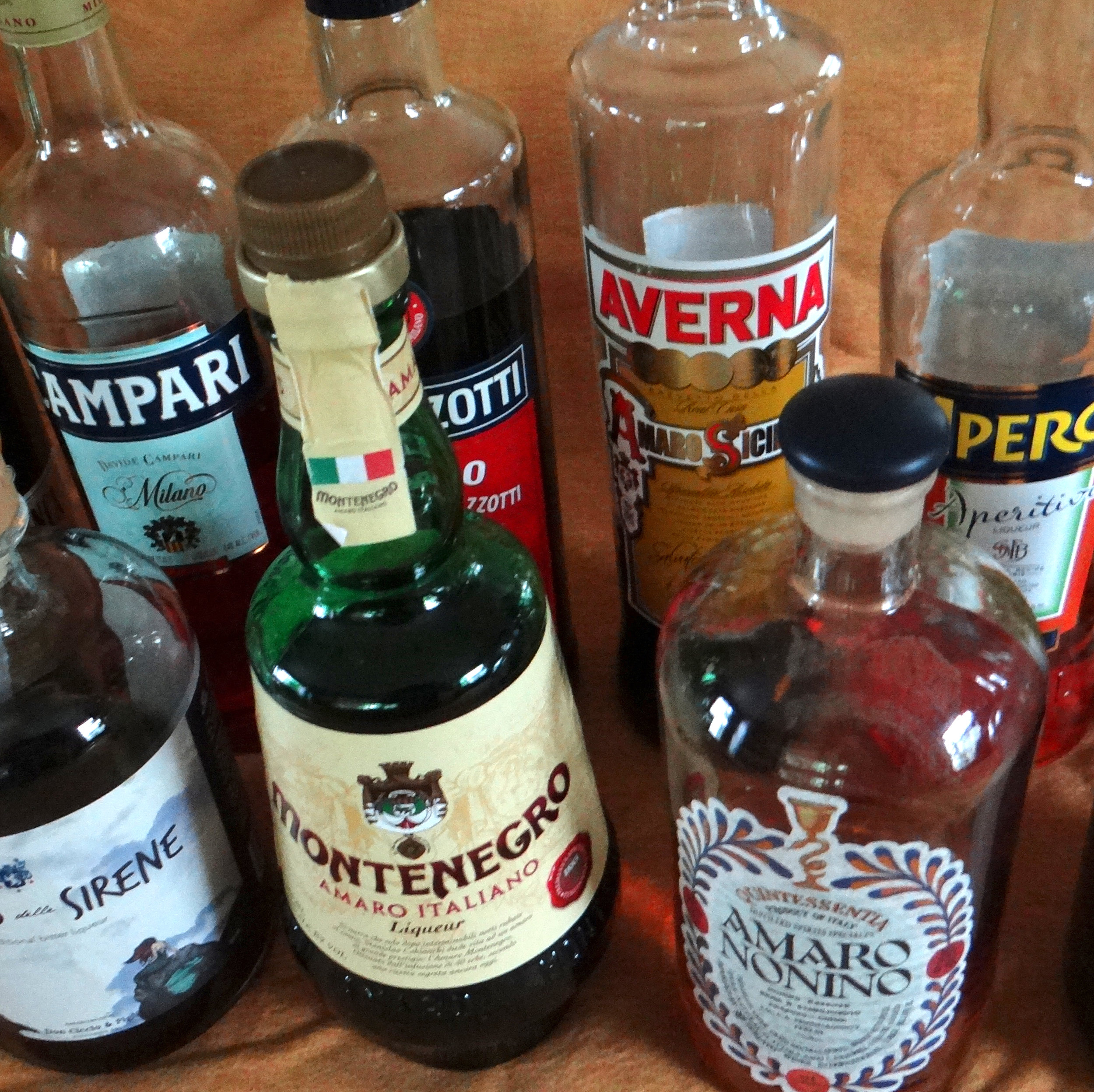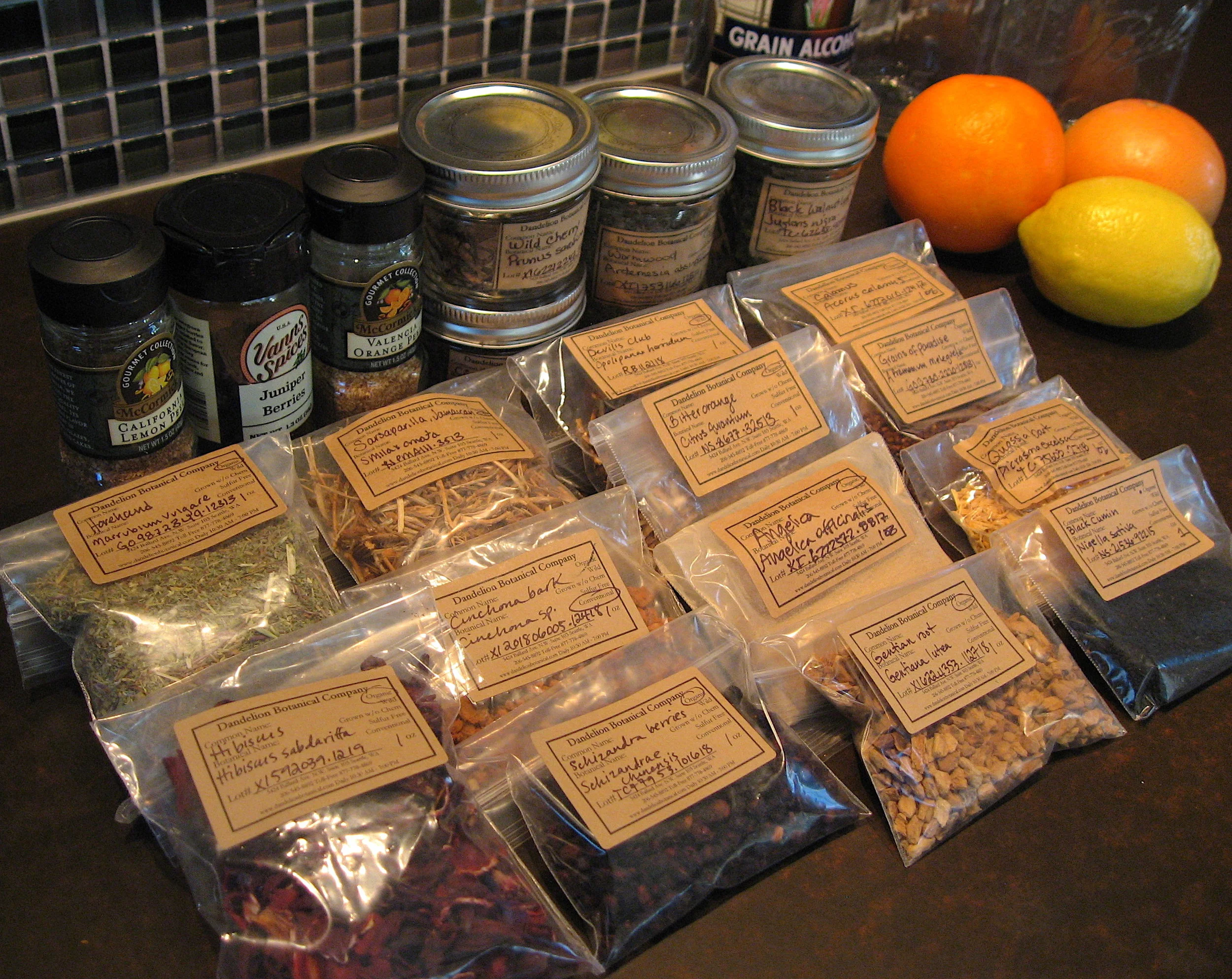Local amaro

Imagine my excitement to discover that amaro is being made in my own backyard! Not literally, but close enough. Don Ciccio & Figli, located in northwest DC, recently celebrated their fifth anniversary. Owner and taste-master Francesco Amodeo, who grew up on the Amalfi coast, is a fourth-generation producer of artisanal liqueurs. His recipes are inspired by the flavors of traditional small-batch amari, such as the one his grandfather used to make in the 1930s. Purists might scoff at the notion of amaro from outside the boundaries of Italy, but these are the real deal.
There’s a tasting room attached to the production facility, so J and I paid a visit on a blustery Saturday afternoon to sample their wares. We climbed the stairs of a non-descript industrial building, stencils of mermaids (the company’s logo) pointing the way to our destination. One wall was lined with bottles of their products – in addition to amaro, Don Ciccio & Figli make traditional Italian liqueurs such as limoncello and nocino (from green walnuts), as well as more unusual flavors like finocchietto (fennel) and fico d’India (prickly pear). J went for the full tasting, but I decided to focus on the half-dozen amari they offer.
One of the pleasures of tasting is to tease out the different flavors and identify the ingredients. Some are relatively easy (like orange and vanilla), some more challenging (definitely citrus, but is that grapefruit or lemon?), and some nearly impossible. I scored points for identifying artichoke (!) as the key component of one amaro, plus a bonus for using the Italian name for this vegetable (carciofo). The taste was reminiscent of Cynar, another artichoke-based amaro popular with mixologists. But this one, called C3 Carciofo, adds cardoons, roots, and herbs to the mix, and turns the flavor knob to 11. Intensely delicious!
Eager to experiment, I brought a bottle of the C3 Carciofo home with me (as well as a few others). After additional tasting and a few trial drinks, I settled on cognac and vermouth as the perfect partners. Add a bit of orange, tweak the ratios, and voila! I give you the Thistleblower, a name equally reflective of its DC heritage (land of political subterfuge) and its vegetable ingredients.
Thistleblower
- 1½ oz. Pierre Ferrand 1840 cognac
- 1 oz. Carpano Antica sweet vermouth
- ½ oz. C3 Carciofo amaro
- dash of Regan’s Orange Bitters No. 6
- orange twist, for garnish
- cocktail shaker, ice, bar spoon, coupe glass
Steps
- Half-fill the shaker with ice
- Add liquid ingredients and stir until chilled
- Strain into a pre-chilled coupe glass
- Rub the orange twist around the rim of the glass, then drop into the drink
h.





